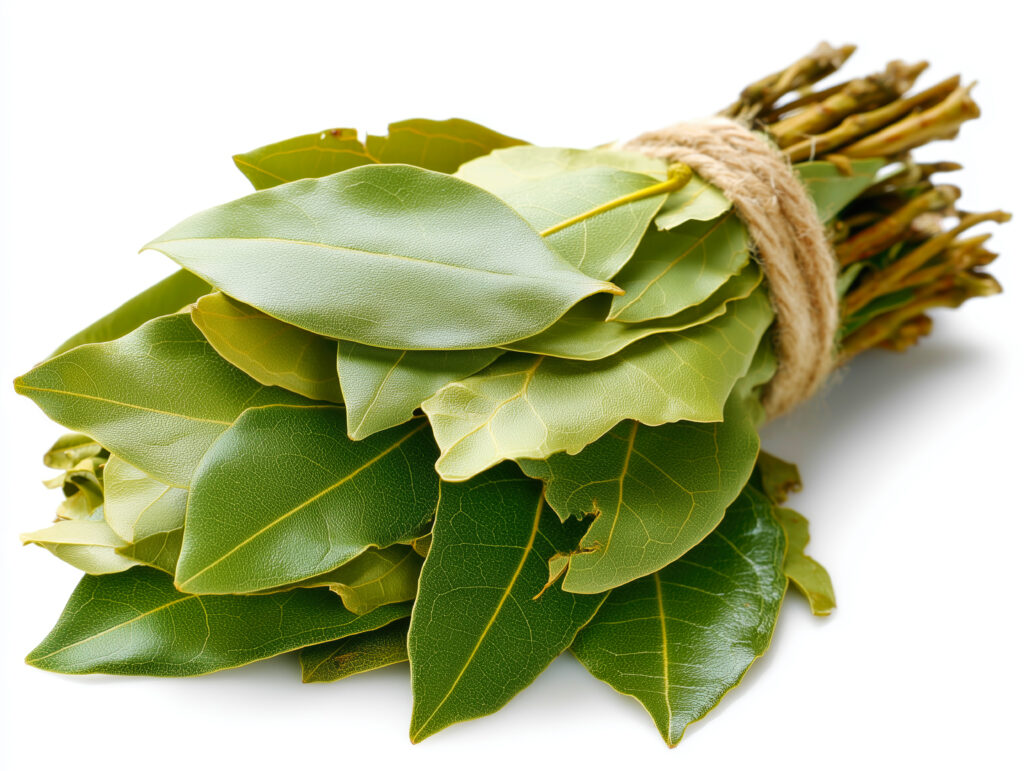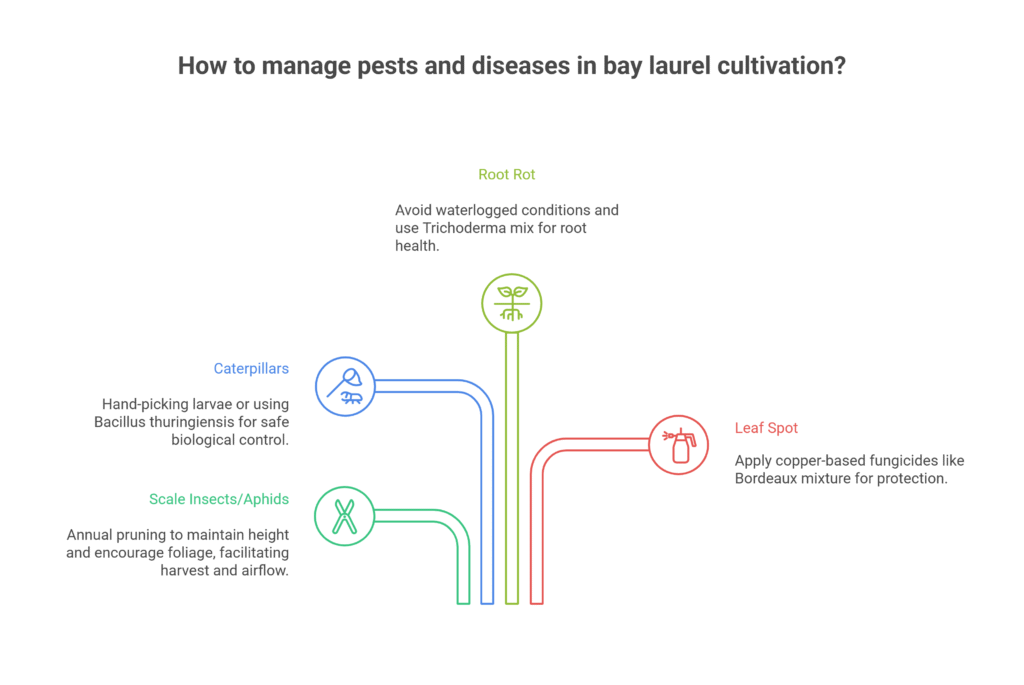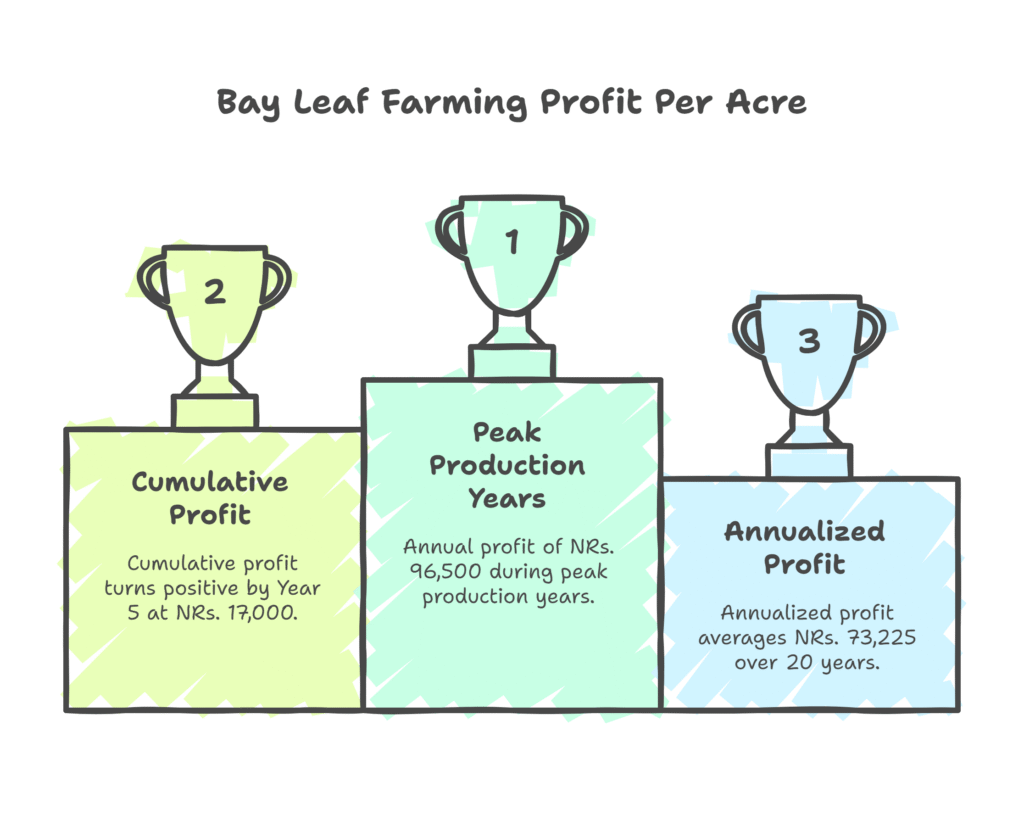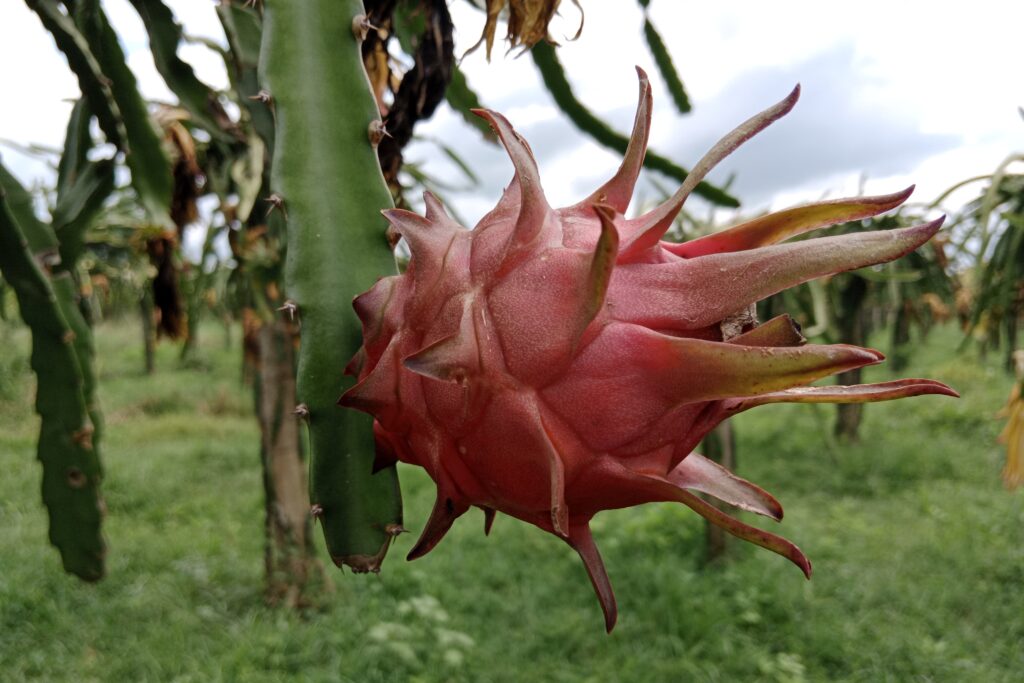Bay Leaf Farming
Bay leaf (Laurus nobilis), a perennial evergreen tree/shrub, is cultivated for its aromatic leaves used in culinary and medicinal applications. Bay Leaf Farming Profit per Acre is highly attractive, offering substantial returns over time. The cumulative profit turns positive by Year 5 at NRs. 17,000, with full cost recovery achieved in the same year. Over a 20-year cultivation period, the total net profit amounts to NRs. 1,464,500 against a total investment of NRs. 529,000, resulting in a strong Return on Investment (ROI) of 276.8%.

During the peak production years (Years 6–20), farmers can earn an annual profit of approximately NRs. 96,500, calculated by subtracting annual costs (NRs. 25,000) from the income (NRs. 121,500). On average, the annualized profit stands at NRs. 73,225, clearly demonstrating that Bay Leaf Farming Profit per Acre is both lucrative and sustainable over the long term.
Land Preparation
The process of preparing land for bay leaf cultivation involves deep plowing to a depth of 20-30 cm to loosen the soil, followed by harrowing to break up clods and leveling the ground to ensure proper drainage; one to two months prior to planting, pits measuring 45 cm × 45 cm × 45 cm are dug and left to sun-dry, which helps eliminate soil-borne pests, and each pit is then refilled with a mixture of topsoil and 10-15 kg of well-decomposed farmyard manure (FYM) to enrich the soil and promote robust root development before planting.
Soil Type
Bay leaf thrives in well-drained, loamy or sandy-loam soils rich in organic matter, which support optimal root development and nutrient uptake. The ideal soil pH ranges from slightly acidic to neutral (6.0–7.5). Crucially, waterlogged or saline soils must be avoided, as they hinder growth and can cause root damage.
Climatic Requirements
The bay leaf (Laurus nobilis) can withstand brief frosts and grows best in temperatures between 15 and 30°C. However, prolonged exposure to temperatures below -5°C may cause damage. Once established, it prefers moderate annual rainfall of 700 to 1,500 mm and is reasonably drought-tolerant. The plant may be grown up to 1,000 meters above sea level and thrives in locations that receive full sun to partial shade. It requires at least six hours of sunlight every day.
Major Cultivars
The only variety of bay leaf considered safe for culinary use is True Bay Laurel (Laurus nobilis), while similar-looking species like Pimenta racemosa should be avoided due to potential toxicity. There are no clearly defined commercial cultivars, but regional selections are often made based on the essential oil content of the leaves.
Seed Rate per Acre
Bay leaf is primarily propagated through stem cuttings or air layering, as seed propagation is generally slow and unreliable; hence, seed rate per acre is not typically applicable for commercial cultivation.
Planting
a). Season
Bay leaf is best planted during the onset of the monsoon (June–July) or in the spring (February–March), allowing adequate time for root establishment under favorable moisture and temperature conditions.
b). Spacing
3 m × 3 m
c). Method
Plant healthy saplings or rooted cuttings measuring 30–45 cm in height into prepared pits, ensuring they are firmly placed and watered immediately after planting to support initial establishment.
d). Number of Plants/Acre
Approximately 450 plants can be accommodated per acre following the recommended spacing and planting method.
Intercropping
In order to optimize land utilization during the first three to four years, bay leaf should be interplanted with shade-tolerant crops like ginger, turmeric, and leafy greens. This will assist to prevent tall or invasive plants from competing for nutrients and impeding the growth of the primary crop.
Irrigation
Irrigation management begins with fortnightly watering for new plants during dry spells to ensure establishment; once mature, established plants require only monthly deep watering as they are drought-resistant—though consistent moisture improves yields. Critical stages demanding irrigation include leaf emergence periods and peak summer months, while strict avoidance of waterlogging is essential to prevent root damage throughout all growth phases.
Fertilizer and Manure Application Schedule
| Timing | Growth Stage | FYM (per plant) | N (per plant) | P₂O₅ (per plant) | K₂O (per plant) | SSP (per pit) | Notes |
| At Planting | Basal Dose | 10 kg | – | – | – | 100 g | Applied directly in the pit during planting. |
| Annual Application | Years 1–2 | – | 50 g | 25 g | 25 g | – | Applied yearly, N split in June & October. Apply whole dose of P₂O₅ and K₂O. |
| Annual Application | Year 3 onward | 15–20 kg | 100 g | 50 g | 50 g | – |
Weed Control
Weed control involves applying organic mulch such as paddy straw or grass around the plants to suppress weed growth, supplemented by manual weeding every three months, particularly around young plants. Chemical control with pre-emergent herbicides like glyphosate may be used cautiously, restricted to areas away from the root zones to avoid damage.
Flowering and Fruit Management
The main focus is on annual pruning to keep trees and bushes at a manageable height of 1.5 to 2 meters, which makes harvesting easier and encourages the production of dense foliage. Dead or diseased branches are also removed to promote plant health and airflow. Flowering and fruit management requires little intervention because the insignificant yellow spring flowers of bay laurel have no effect on the quality or yield of leaf harvest.
Pest and Disease Management
Common Pests
a). Scale insects/aphids
Flowering and fruit management involves minimal intervention, as bay laurel’s insignificant yellow spring flowers do not impact leaf harvest quality or yield; the primary focus is annual pruning to maintain trees/bushes at a manageable height of 1.5–2 meters, which facilitates easier harvesting and encourages dense foliage production, while also removing dead or diseased branches to promote plant health and airflow.
b). Caterpillars
For caterpillar control, implement immediate hand-picking during early infestation stages to physically remove larvae, or apply targeted biological control using Bacillus thuringiensis (Bt)—an environmentally safe microbial insecticide that disrupts caterpillar digestion without harming beneficial insects or compromising leaf quality.

Common Diseases
a). Root rot
Root rot prevention and control requires strict avoidance of waterlogged conditions through proper drainage management, as excess moisture is the primary trigger for fungal pathogens; additionally, apply a soil drench or root-zone treatment with Trichoderma mix—a beneficial antagonistic fungus that colonizes root systems, suppresses disease-causing organisms (Phytophthora, Fusarium), and enhances plant resilience without chemical residues.
b). Leaf spot
To manage leaf spot disease, apply copper-based fungicides such as Bordeaux mixture (a blend of copper sulfate and lime) as a protective spray at the first sign of symptoms or preventively during humid conditions, effectively suppressing fungal or bacterial pathogens by creating a barrier on leaf surfaces and inhibiting spore germination while maintaining crop safety when used at recommended concentrations.
Harvesting
Harvesting begins in Years 3–4 once plants reach maturity, where dark-green, fully developed leaves are selectively hand-picked while avoiding young foliage to preserve plant vitality, with a maximum of 10–15 leaves per branch harvested to prevent over-stripping; this occurs twice annually during peak phases—pre-flowering in spring and late monsoon—after which leaves are shade-dried for 7–10 days until achieving a brittle texture and finally stored in airtight containers to maintain aroma, flavor, and shelf life.
Yield
Bay Leaf Yield per Acre
| Growth Stage | Fresh Leaves (kg/acre) | Dried Leaves (kg/acre) | Notes |
| Years 3–4 | 500–800 | ≈150–250 | First harvest cycle |
| Year 5+ | 1,000–1,500 | ≈300–500 | Peak production phase |
| Leaf Oil Yield | 1–3% of fresh weight | – | Used in perfumery & extracts |
Typically, 3 to 3.5 kg of fresh bay leaves yield about 1 kg of dried leaves, reflecting a recovery rate of approximately 30%. From 1,000 kg of fresh leaves, essential oil extraction produces between 10 to 30 kg, equating to a 1–3% oil yield. With proper management, bay leaf yields stabilize after the fifth year and maintain consistent productivity for over 15 years.
Cost of Investment Per Acre for Bay Leaf Farming
| S.N. | Category | Cost (NRs.) |
| 1 | Land Preparation (Plowing) | 10,000 |
| 2 | Plant Saplings | 10,000 |
| 3 | Planting | 2,000 |
| 4 | Fertilizers and Manure | 9,000 |
| 5 | Irrigation | 5,000 |
| 6 | Weed Control | 4,000 |
| 7 | Pest & Disease Control | 4,000 |
| 8 | Harvesting | 4,000 |
| 9 | Miscellaneous Costs | 6,000 |
| Total Initial Investment | 54,000 |
Annual maintenance Cost Per Acre for Bay Leaf
Annual maintenance cost from the second year onwards is approximately NRs. 25,000 per acre.
Income from per Acre Bay Leaf Farming
| Year | Yield/Tree (kg) | Yield/Acre (kg) | Price (NRs/kg) | Income (NRs.) |
| 2 | 0.5 | 225 | 40 | 9,000 |
| 3 | 1.5 | 675 | 40 | 27,000 |
| 4 | 3.0 | 1,350 | 40 | 54,000 |
| 5 | 4.5 | 2,025 | 40 | 81,000 |
| 6–20 | 6.0 | 2,700 | 45 | 121,500/year |
Analysis of Bay Leaf Farming Profit Per Acre
Bay leaf farming offers strong financial returns over the long term, with the cumulative profit turning positive by Year 5 (NRs. 17,000) and full cost recovery also achieved mid-Year 5. The total net profit over a 20-year period amounts to NRs. 1,464,500 against an initial total investment of NRs. 529,000, resulting in an impressive Return on Investment (ROI) of 276.8%.

During peak production years (Years 6–20), annual profits reach approximately NRs. 96,500, calculated as the difference between yearly income of NRs. 121,500 and costs of NRs. 25,000. When averaged over the full 20-year span, the annualized profit stands at NRs. 73,225, highlighting bay leaf farming as a highly profitable and sustainable long-term agricultural venture.
Bay Leaf Farming Crop Calendar (Per Acre Basis)
| Month | Growth Stage | Key Activities | Remarks |
| April-May | Land Preparation | Deep plowing (20-30 cm), pit digging (45 cm³), sun-drying pits for 1-2 months | Apply 10-15 kg FYM + topsoil mix per pit |
| June-July | Planting | Transplant 30-45 cm saplings/cuttings (450 plants/acre at 3m×3m spacing) | Ideal monsoon planting; water immediately after planting |
| Aug-Oct | Establishment (Year 1) | Fortnightly irrigation, intercropping (ginger/turmeric), apply mulch | First manual weeding; monitor for pests (scale insects) |
| November | Nutrient Management | Apply 50g N (split dose) + 25g P₂O₅ + 25g K₂O per plant (Year 1) | Avoid waterlogging in winter |
| Dec-Feb | Dormant Maintenance | Monthly irrigation (if dry), prune dead branches, monitor root rot | Protect from frost (< -5°C); reduce watering |
| March | Pre-flowering | Annual pruning (maintain 1.5-2m height), apply copper spray for leaf spot prevention | Prepare for spring harvest |
| April-May | First Harvest | Hand-pick mature leaves (pre-flowering; max 10-15 leaves/branch) | Shade-dry leaves 7-10 days; store airtight |
| June | Post-Harvest Care | Apply FYM (15-20 kg/plant) + 100g N + 50g P₂O₅ + 50g K₂O (Year 3+) | Re-mulch; restart monsoon irrigation |
| July-Sept | Active Growth | Quarterly weeding, biweekly irrigation (young plants), pest monitoring | Treat caterpillars with Bt spray if detected |
| October | Second Harvest | Late monsoon harvest; repeat drying/storage process | Collect leaves before winter dormancy |
| Year-Round | Ongoing Tasks | Pest/Disease Control: – Neem oil for scales/aphids – Trichoderma for root rot Irrigation: Mature plants: Monthly deep watering | Avoid chemical herbicides near root zone |
Sources
Batool, S., Khera, R. A., Hanif, M. A. and Ayub, M. A. (2020). Bay leaf. Medicinal plants of South Asia. pp.63-74.


